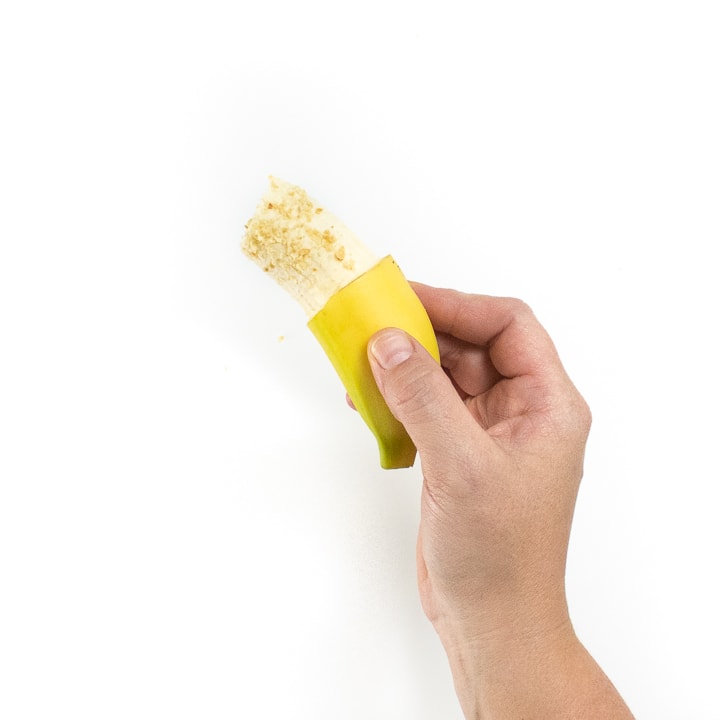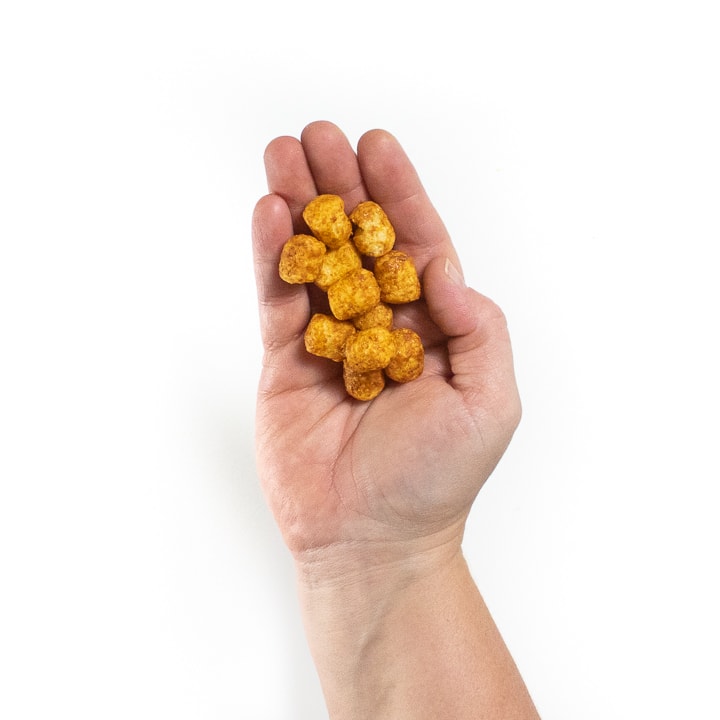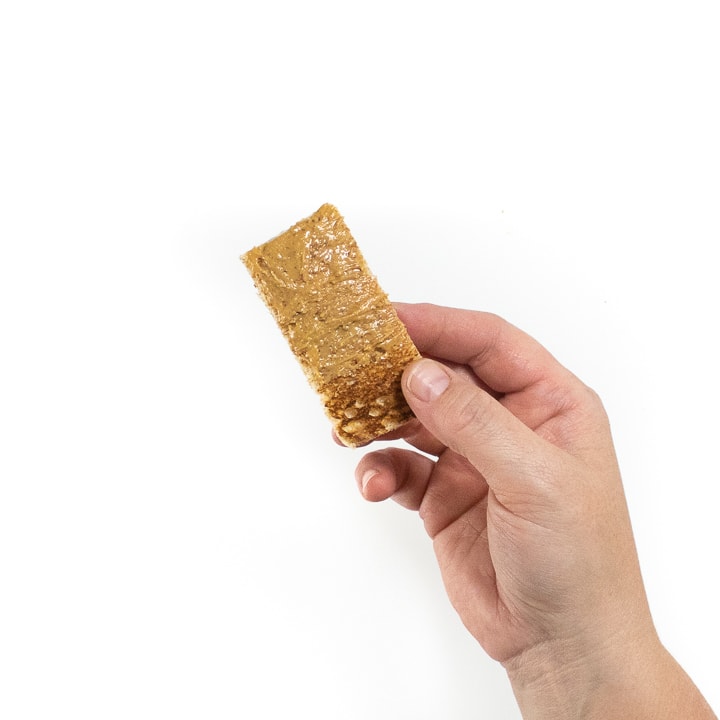Feeling unsure about how to introduce peanuts to your baby? You’re not alone—and I’m here to help! Introducing peanuts to your baby doesn’t have to feel overwhelming, and thanks to my twelve years of experience feeding babies, I’ve got starter peanut recipes on lockdown. I’ve guided many parents through this process, and I’m excited to help you do the same. It’s time to grab your baby spoon—let’s do this!
Medically reviewed and cowritten by Jamie Johnson, Registered Dietitian Nutritionist (RDN), and Lauren Braaten, Pediatric Occupational Therapist (OT).
Here we go—it’s peanut time!
I totally get that it can feel a little nerve-wracking at first.
But introducing peanuts early and often is key for long-term success when it comes to incorporating them into your baby’s diet. And trust me, the best way to start is with a calm, low-stress approach (with lots of supervision), you’ve got this.
Here are some easy, go-to options I’ve leaned on time and time again:
– A small amount of peanut butter stirred into yogurt, applesauce, or mashed avocado (yes, please!)
– A thin smear of peanut butter on lightly toasted bread (a fave!)
– Steamed strips of sweet potato or apple topped with crushed peanuts (absolutely!)
– Having your baby lick a little peanut butter off your clean finger (a gentle first step!)
– Store-bought peanut puffs made just for babies (hello, convenience!)
No need to go overboard—just a small amount counts. The goal is consistency, not quantity!




Peanut Allergies
Peanuts are considered a top food allergen, so just be aware of any reactions your baby may have when feeding foods with nut ingredients in them. Reactions can happen within minutes to hours after feeding, so it’s best to serve them at a time when you can observe your child for a few hours after, rather than at dinner time. Some symptoms of a reaction include itchy rashes, hives, vomiting, trouble breathing, swelling of the lips and tongue, and anaphylaxis. Call your pediatrician if any of these develop, or 911 if your child is experiencing anaphylaxis.
#mymomhack – I have found that it’s best to serve peanuts earlier in the day. When you plan to introduce peanuts, offer them earlier in the day at breakfast or lunch, so you can monitor your baby for any reactions that might arise.

Peanuts for Baby-Led Weaning
Peanuts, along with other nuts and nut butters, present a choking risk to babies and kids. To minimize this risk, make sure to thin out peanut butter with water, formula, breast milk, or pureed fruit. You can also sprinkle finely ground peanuts on foods.
- 6+ months – Peanut butter mixed into Oatmeal, Yogurt, or Avocado, or mixed into any puree your baby prefers. You can spoon-feed it or load the puree onto a self-feeding spoon and hand it to your baby for them to self-feed. Steamed sweet potato wedges or apples with finely crushed peanuts; thinned out peanut butter on a banana.
- 9+ months – Smear on toast or peanut puffs: You can serve puffs to give your baby practice with their developing pincer grasp, or serve toast if your baby is still struggling with it.
- 12+ months – PB and Honey Sandwich; PB Banana Smoothie: PB and honey is a great combination, and now that your baby is 1, honey can be introduced!
Peanut Butter Yogurt for Baby
Steamed Sweet Potato Sticks with Crushed Peanut Coating
- 1/2 sweet potato, peeled and chopped into 2-3″ long sticks
- 1 tbsp plain peanuts, finely chopped or crushed
Prevent your screen from going dark
Peanut Butter Yogurt for Baby
Steamed Sweet Potato Sticks with Crushed Peanut Coating
-
Place the sweet potato sticks into a steamer basket over 2 inches of boiling water for 10-15, or until tender when pricked with a fork. Let cool. Roll the steamed sweet potatoes in the crushed peanuts and serve.
Yield: 2 portions for baby
Storage: you can store the peanut yogurt in an air-tight container in the fridge for up to 4 days. Store the steamed sweet potato sticks in an air-tight container for up to 3 days and roll in crushed peanuts before serving.


